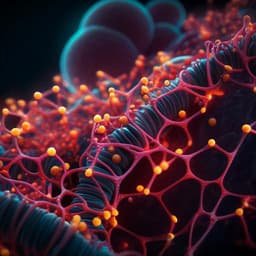
Medicine and Health
Scalable batch fabrication of ultrathin flexible neural probes using a bioresorbable silk layer
C. Cointe, A. Laborde, et al.
Discover the innovative scalable batch fabrication technique behind ultrathin and flexible neural probes developed by Clement Cointe, Adrian Laborde, Lionel G. Nowak, Dina N. Arvanitis, David Bourrier, Christian Bergaud, and Ali Maziz. These remarkable probes facilitate high-fidelity recordings of epileptic seizures and neuron activity, revolutionizing the field of neural interfacing.
Playback language: English
Related Publications
Explore these studies to deepen your understanding of the subject.







